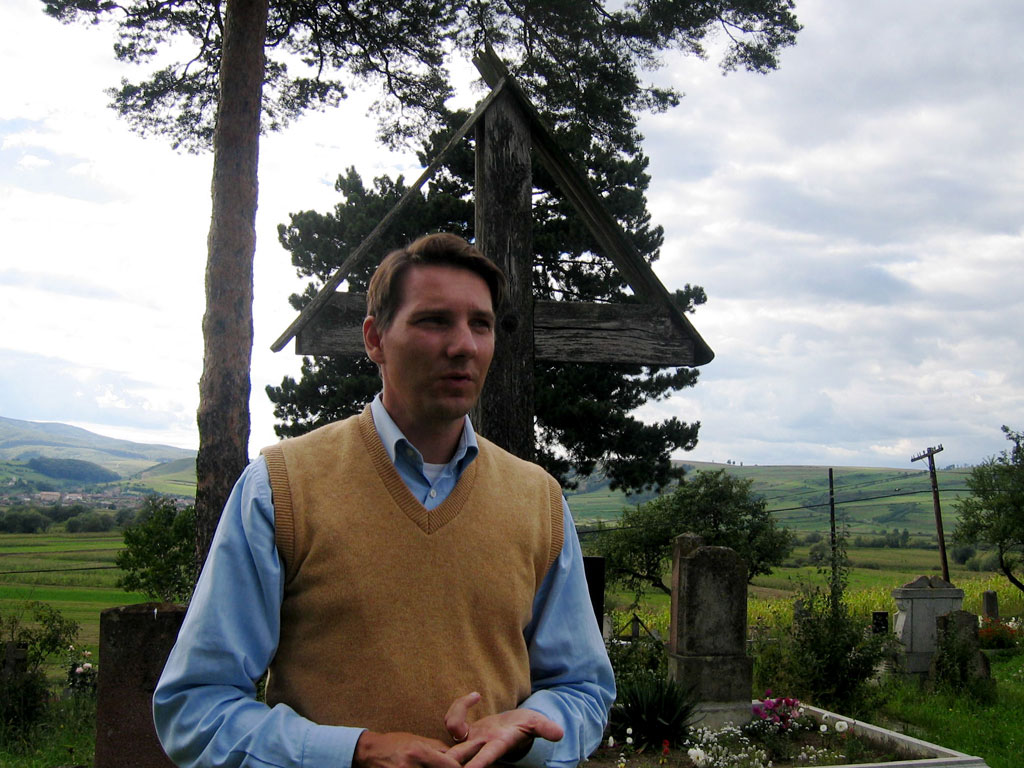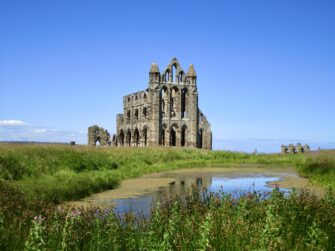
* This is the fourth post in a new weekly series, highlighting old stories from my travel-writing archive. I’m running them here in full. Subscribe to this website for more.
Friday night. Downtown Bucharest. The Count Dracula Club restaurant is doing a brisk trade with bemused tourists and black-clad Eurogoths, sipping blood-red Deeper Kiss cocktails. As we tuck into the Evil Salad (“Don’t smell the basil”), a man in a black cape with a fine line in facial pallor is running through a kitsch vampire floorshow, culminating in a spot of crowd-participation neck biting.
“No white wine,” shrugs a bored, white-faced Morticia Adams-lookalike waitress. “Only red. This is, after all, Dracula’s House.”
Some 15 years after Romania emerged from the dark ages of Ceausescu’s brutal regime, Dracula kitsch is proving a big draw for Romania’s fledgling tourism industry.
Indeed, the legend created by Bram Stoker’s bastardised take on the legend of the Romanian overlord Vlad Tepes, aka Dracul (meaning ‘evil’ in Romanian), today draws coach parties and tour groups – pretty ironic as the Dracula author never visited Transylvania in his life.
The novel was originally called The Undead and set in Austria; he changed details after initial claims of plagiarism.
There is, however, more to Romania’s early forays into tourism than men with plastic teeth. While Prague is now overrun with beer-soaked stag parties and Budapest firmly established in the brochures of the major tour operators, Romania still feels wonderfully untouched.
Better still, there are moves afoot to resist selling out to the filthy lucre of mass tourism and develop smaller, local tourism projects along more sustainable lines. The Romanian government may still be striving to shake off its Communist hangover and secure entry to the EU by 2007, but community projects are thinking long-term, lobbying hard for ecotourism over Euros.
One such project invites you to take a bite out of rural Transylvania as a guest of Count Tibor Kalnoky (pictured above), a genuine Transylvania count, whose 750-year family history spans the political history of Old Europe. And before you go getting any ideas, the man locals doff their caps to and address as “Mr Count” is urbane, charming and not prone to bedding down in coffins.
This time you can leave the crucifix at home.
From Bucharest, it’s a three-hour train journey through the Romanian countryside to the city of Brasov, where Kalnoky’s driver is waiting to whisk us to the tiny Transylvanian village of Miclosoara, 45km northeast of Brasov and nestled in the foothills of the Carpathian Mountains.
A rustic bridge across the River Olt marks the national divide between the villages Saxon and Szekely Romania, where a local Hungarian dialect is the predominant tongue. Round these parts, agriculture remains the main industry, horse and cart the primary medium of transport and the patchy local electricity supply regularly plunges the dusty main drag into darkness after the cows come home at dusk.
If you do run into a vampire, there’s nobody around to hear you scream.
Tibor’s ancestor, Samuel Kalnoky, was an erstwhile regional chancellor of Transylvania. He built the family’s powerbase through shrewd political decisions and military connections, accepting the title of Count from the Imperial House of Hapsburg and set about building the family’s hunting lodge in Miclosoara in 1686.
The Kalnokys were exiled from Transylvania in the 1939 with the rise of fascism, leaving the ancestral pile to fall into disrepair. It was first looted then used to house offices for the collective farming syndicate.
Tibor returned to Transylvania shortly after the fall of Communism to set about the huge task of re-acquiring and restoring the family property to its former glory. He sued the Romanian state for eight years for the right to reclaim the family home.
Today, the revenues from the guesthouses – eight rooms in cottages throughout the village, decorated in traditional village style with antique furniture – are helping to pay for the restoration of the Kalnoky home. Once completed, he hopes to open it as a boutique hotel.
“The moment of epiphany came at church the night we returned to the village,” remembers Tibor. “I remember the old ladies at the mass crying as they recognised my father and I. Despite 50 years in exile, the outpouring of affection for the family was immense.”
We gather that night for dinner in the wine cellar. An eclectic bunch of British historians, a young couple keen on hiking and some prickly Americans on a riding holiday, we take our seats around the candlelit dinner table as if gathering for an Agatha Christie murder mystery, while the waitress serves up a turnip soup and chicken stew from large china ladles.
“Our guests range from diplomats to holidaymakers via the diplomatic ex-pat community, weekending from Bucharest. We aim to maintain a balance of atmosphere and personal service,” explains Tibor, over a post-prandial plum brandy in the drawing room.
But murmurings in the village suggest that Kalnoky is starting to become a victim of his own success. He used to greet and guide guests personally but, now, with increasing numbers arriving off the train to Brasov, his staff are primarily handling the day-to-day business, while the Count himself puts in the odd dinner-party appearance.
The next morning, a breakfast of coffee and bread with homemade jam and local cooked meats is served outside in the shade of the apple trees. There’s no fixed routine, as such, but local guides offer plenty of optional daily activities.
These range from horse and cart rides out to local beauty spots to a half-day jaunt into Sighisoara, the Unesco-listed medieval city, which recently escaped being the site of a much-derided Dracula Land theme park thanks to the personal intervention of our own Prince Charles.
The regulars at the Count Dracula Club restaurant are not Tibor’s target market. Indeed, the legions of Dracula fans that will flock to Transylvania for Halloween this year will find short shrift in Miclosoara. October 31 is a complete non-event around these parts but on November 1, the Day of the Dead, families will gather in churchyards across Transylvania to pay their respects to deceased relatives.
On our last day Tibor takes us for a guided tour of the hunting lodge. Climbing through the ruins, he points out a faded family crest, one of the first things to be uncovered during initial restoration work in 1995.
The motto reads: No est Mortale Qvod Opta (My life’s choice will live forever).
“Like Romania, we have a long haul ahead of us and feel, at times, we are swimming against the tide,” he says, as the autumnal afternoon draws across the cornfields of rural Romania.
Then he smiles. “I tell the locals I’ve come back to dig up the family treasure. That’s the only way they can believe why we’re still here.”
* This story, the first of several about Romania, appeared in the Guardian in 2004. Read the original, Gothic Quarters.

